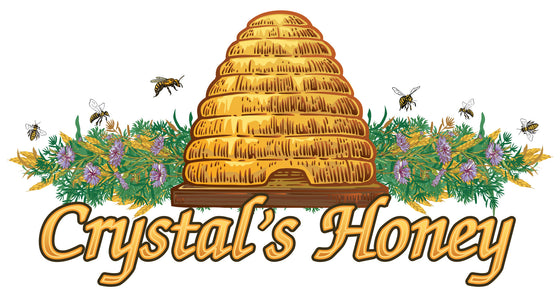We’ve all seen honeybees on flowers and known they’re getting that sweet nectar they need to survive. However, not everyone knows the exact process that allows the bee to create honey. What happens to the nectar that creates that delicious golden substance? Read about the honeybee’s honey-making process to begin understanding how bees make honey.
Extracting Nectar from Flowers
Nectar is the sweet substance in flowers and plants that attracts pollinators such as honeybees. Worker bees, called foragers, collect the nectar by sucking droplets of it with their straw-like tongues, which are called proboscises. They then store any excess nectar in their stomachs.
A Bee’s “Honey Stomach”
The “honey stomach” is a special organ in the forager’s abdomen where the bee stores nectar as it flies back to the hive. This organ has a spherical shape, and it’s the initial site of the bee’s food digestion. The enzymes in the organ break down the sugars in the nectar so that the bee can eat the fructose and glucose.
How Bees Make the Hive
Worker bees also make the hive so that the colony can store honey during the winter. They construct the hive by chewing wax until it becomes soft. Then, they bond the soft wax into the cells of a honeycomb. They make the honeycomb tubes hexagonal because the shape requires less wax yet holds more honey.
Inside the Hive
Nectar-to-honey conversion begins in the hive, so it’s an important part of understanding how bees make honey. Inside the hive, the forager bee passes its nectar to a processor bee, who regurgitates it and passes it to the next processor bee. As the process continues from bee to bee, an enzyme called invertase gets added to the nectar.
Ripening Process
Nectar becomes honey from the invertase enzyme as well as from a reduction in moisture. When the nectar goes from each processor bee to the next, the moisture content is reduced significantly. Even once the honey is put into the honeycomb cell, the bees ripen it by drying it out further. They use their fan wings to create a wind that reduces moisture.
Storing Honey in the Hive
Just like the cap of a honey jar, bees place a seal of wax over the cell of the honeycomb once it’s filled with honey. That keeps the honey clean and fresh, and it can now be stored there through the winter.
Along with honey, raw honeycomb is a natural product of the honeybee. If you’re looking for the best in unfiltered raw honey and honeycomb honey, visit Crystal’s Honey. Here you’ll find honey that’s as close to how the bees make it as you can get.
